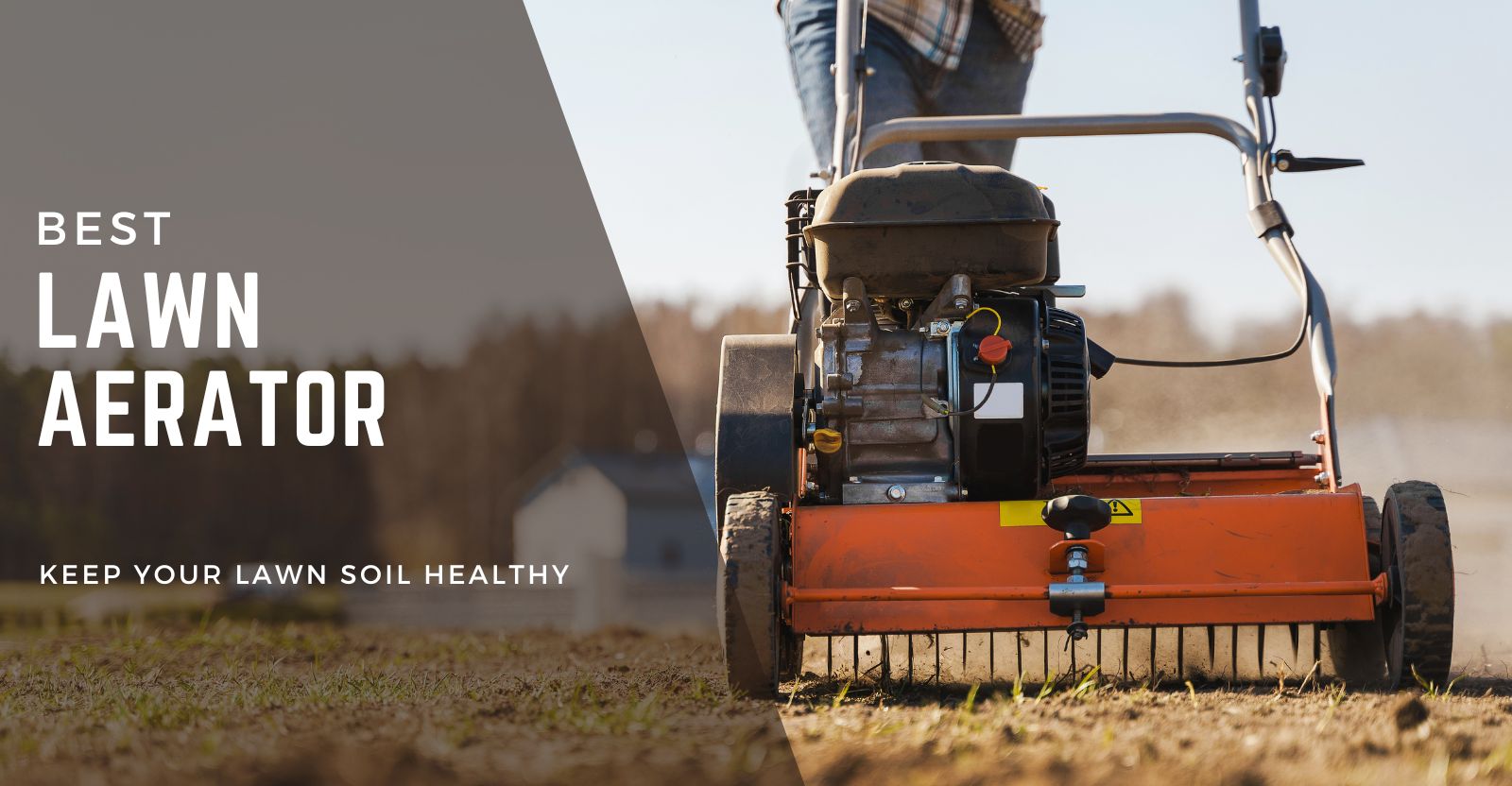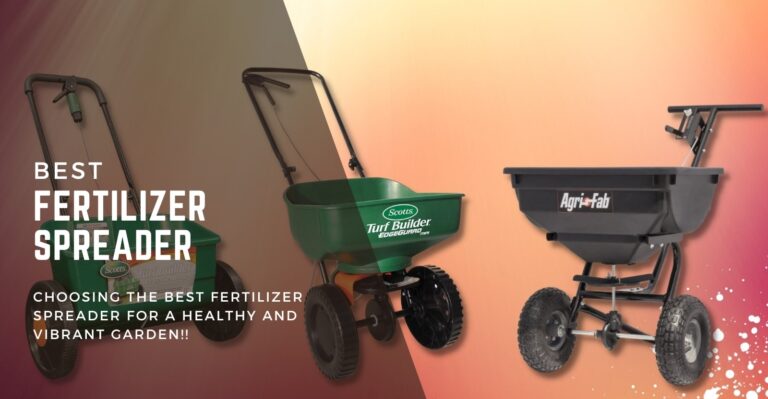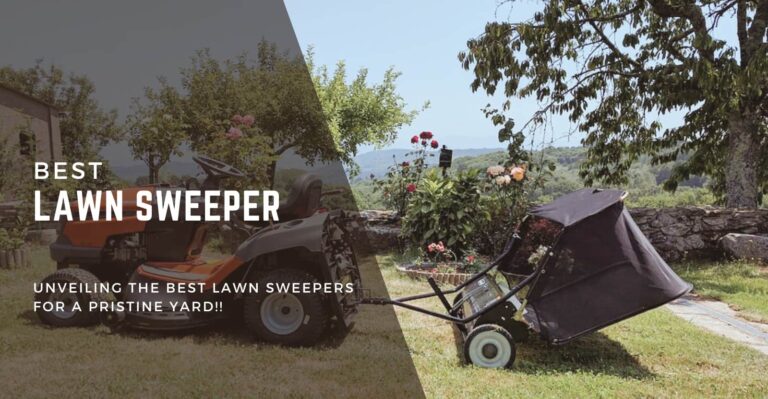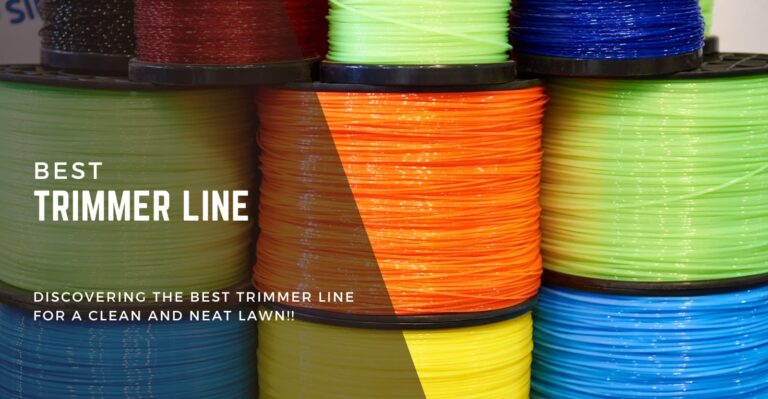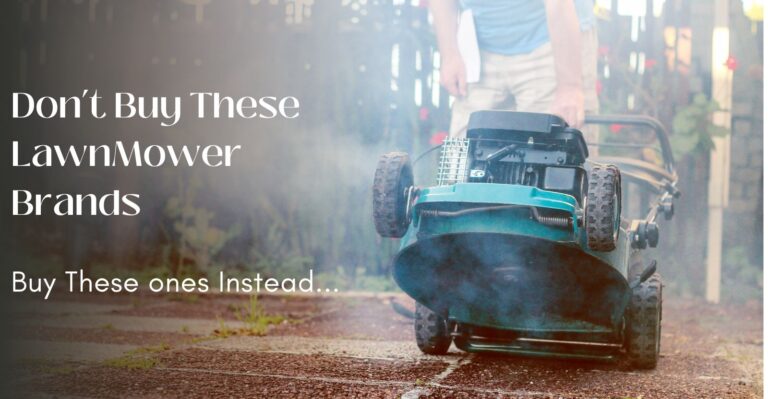Amazon has put together some great Home Gift Deals – save money and get your shopping done at the comfort of your home! Click here to see deals on Amazon
A well-maintained yard with green grass carpet improves the beauty of your home. No one likes to look at rough-shaped and patchy dead grass.
However, sometimes even after using all the required fertilizers and providing proper care, the yard still looks troubled.
There are several gardening tools you can use for lawn care. This post looks at the best lawn aerator available in the market and things you should consider before purchasing.
If you’re in a rush and don’t want to read the entire review, you can also choose from our top picks as per your need.
Quick Picks
We may earn a small commission, at no cost to you, when you buy from our link to support us. More
Agri-Fab 48-Inch Tow Plug Aerator
High-quality tow plus aerator that contains 32 galvanized knives to penetrate the soil easily. Flat-free tires for smooth transport. Comes with a 3-year warranty
Yard Butler Lawn Coring Aerator
Hand-held lawn aerator with foot bar for extra leverage. Perfect gardening tools for aerating small yards. Removes 1.5 inches wide and 3.5-inch deep grass plugs.
EnvyGreen Lawn Aerator Shoes
Easy to use manual lawn aerator shoes. Hassle-free X-strap technology holds your feet comfortably. Fits most size shoes and comes fully assembled.
5 Best Lawn Aerator in Market
Product
Name
Detail
Price
- 32 galvanized knives
- 3 inch deep plug
- 3 year warranty
- Attachment for Mantis
- 60 spring dethatcher
- 15 inch wide pass
- Fits any shoe size
- 2.1 inch spike
- No Assembly required
- Manual Core Plug
- 3.5 inch deep core
- 37 inch height
- 40 inch spike aerator
- 10 Tine star (8″ diameter)
- Carry 110 lbs weight
Our Top Pick
Our pick for the best lawn aerator is Yard Butler Lawn Coring.
This is a simple design manual coring aerator that is easy to use and very useful. It’s suitable for smaller size yards to help the struggling lawn receive the required nutrients and moisture to flourish.
It helps you begin the transformation to bring back life to your yard. It comes with a long handle that makes it easy on your back.
What is a lawn aerator?
An aerator is a gardening tool that allows you to loosen the compacted soil. A loose soil enables water, nutrients, and oxygen to pass through the surface and quickly reach the plant roots. It helps grow a healthier lawn and more robust plants.
Many people prefer to aerate their lawn to stimulate the growth of grass in the garden. There are different types and styles of lawn aerators you can buy.
Even after all the differences, the principle of lawn aerators is the same. It works by perforating the soil with small holes to allow air, water, and nutrients to pass.
Do you need to aerate your lawn?
Whether you need to aerate depends on the soil condition in your yard. You don’t need to aerate if the soil is loose and has low density. However, there are several benefits to aerate a lawn. It should be a part of the regular garden maintenance process.
Here are some benefits of aerating:
- Improves the air, water, and nutrients flow in the soil. It makes the soil more fertile and enables healthier plant growth.
- Creates a lush green beautiful grass.
- Helps remove thatch, dead plant or grassroots, that hinders the passing of air and nutrients inside the soil.
- Makes your yard more resistant to heat stress and drought conditions.
- Encourages roots to spread more in-depth in the soil
You may have to aerate the frequently used areas of lawn where people or pets walk. The consistent foot traffic compacts the ground and makes the area dry and spongy.
A newly build or renovated home lawn also needs aeration as the massive construction machinery often compacts the soil.
If you see dry patching or dying grass in your lawn, aeration around that area often helps the grass to recover without needing any excessive intervention.
What to consider when buying Best Lawn Aerator
Manual or Powered
For small size yards you can choose manual aerator as it’s cheap and easy to maintain. For any medium to large size yards choose powered aerator.
Soil type
For highly compacted soil choose commercial grade tow-style aerator. For soft grade soils, you can get away with spike aerator.
Spike or Plug
For highly compacted soil choose a plug aerator. A small, loosely compacted sandy soil spike aerator will be a better option.
Have a question about buying a best lawn aerator? Contact us
Best Lawn Aerator Reviews
1. Agri-Fab 48-Inch Tow Plug Aerator
Best Tow Plug Aerator
Agri-Fab tow behind plug aerator is an easy-to-use lawn aerator with 32 self-sharpening plug knives. It can easily pull the soil without needing much effort.
This is a wide 48-inch aerator that has a weight tray to hold up to 175 lbs. This allows you to adjust the penetration depth depending on the compaction in the soil. With this aerator, you can get the job done in a short time without breaking a sweat.
It’s a tow plug aerator, which means you have to attach it with your powered tractor or even a mower. The universal hitch design lets you hitch it to any tractor. The knives pull 3-inch plugs of soil that allow the ground to have vital air, water, and nutrients available.
Durable and sturdier 32 galvanize hollow tines rotate independently to give you maximum ground coverage even while turning. This means less chance of empty patches that you need to aerate manually.
The simple to use cantilever transport handle enables you easy raising and lowering. You can attach it to any powered unit without struggling to align with the hatch.
You need to do some assembly when you first receive it. The detailed instruction manual is included in the box. It comes with a 3-year limited warranty.
See More Information about Agri-Fab 48-Inch Tow Plug Aerator
Pros
Cons
2. Mantis Aerator/Dethatcher Combo
Mantis Lawn Aerator Attachment
If your lawn doesn’t look healthy even after fertilization, consider investing in Mantis Aerator/Dethatcher combo. You can use it with any Mantis 7000 series Tiller/Cultivator. It’s a great option if you already own Mantis-powered tools.
This attachment option saves you money as you don’t have to buy another standalone-powered tool. The aerator and dethatcher combo are perfect to use on compact or clay soil surfaces.
The aerator’s heavy-duty design makes them an excellent choice for demanding soil conditions and comes at an affordable price.
There are four sets of tempered durable steel knives that cut through highly compacted soil surfaces to allow water, air, and nutrients to get deep in the ground.
Sharp tines are arranged to punch through holes that are roughly 2.5 inches wide and 1.5 inches deep. This arrangement makes it great to use in compact or clay soil.
The combo pack includes a dethatcher attachment that can quickly remove weeds and dead roots. There are 60 spring steel picks in the dethatcher that allows you to dethatch 15-inch width coverage in a single pass.
Both aerator and dethatcher are built with high-quality material and have sturdier construction. Although you can use it for several yard conditions, it’s not recommended to use it for surface rooted grass such as Bermuda, Zoysia, Centipede, and St. Augustine. There is a risk of damaging the shallow root system.
See More Information about Mantis Aerator/Dethatcher Combo
Pros
Cons
3. EnvyGreen Lawn Aerator Shoes
Best Lawn Aerator For Money
If you have a small or medium-sized lawn that you need to aerate occasionally, EnvyGreen Lawn aerator shoes are a great option.
This sturdier and reasonably priced manual lawn aerator is a great way to get started with lawn aeration without needing any complicated aerator machine.
The easy-to-wear aerator shoe features a heavy-duty design that can handle tough compacted soil with ease. It has three adjustable straps designed to fit most shoes and won’t break even after multiple uses.
The steel spikes embedded on the shoe are sharp and give you a 2.1-inch hole in the ground. With X-strap technology, the sturdier elastic fits on your shoes snugly for users up to 220 lbs. Users with a shoe size of 8 to 10 can quickly work without needing any adjustment.
The excess adjustable shoe straps can be folded or tucked around the feet, preventing tripping over. This aerator comes ready to use, and you don’t have to do any assembly. Another great alternative is Abco Tech Lawn Aerator Spike Shoes.
See More Information about EnvyGreen Lawn Aerator Shoes
Pros
Cons
4. Yard Butler Lawn Coring Aerator
Best Handheld Aerator
Yard Butler lawn coring aerator is one of the best manually operated fast and easy-to-use aerators.
It has sturdier construction and a simple design. It includes two 1/2-inch-wide and 3.5 inches’ deep grass plus lawn cores. There is enough gap to place your foot and press it into the ground.
It does a great job of loosening the soil so the grass in your yard can get proper nutrients, air, and water to its roots. A strong plug core can loosen dense, compacted soil or turfs with ease.
The large one-size vinyl handle is comfortable to hold. The cushioned grip allows you to keep the aerator stable while you press more in-depth into the ground.
The aerator is 37 inches long, designed to reduce back strain, and last longer. It works well in stony and root-bound soils. To make the job bit more manageable, you can water the yard lightly to soften the ground.
It makes it easier to remove cores from the ground. After coring, you can easily clean it by soaking coring tips in a bucket of water. It prevents soil from getting dry inside the tip and makes it easy to clean later.
It’s a perfect garden tool for a smaller yard. It promotes vigorous root growth while strengthening grass tolerance to heat and drought stress.
See More Information about Yard Butler Lawn Coring Aerator
Pros
Cons
5. Brinly Tow-Behind Spike Aerator
High-Performance Tow Behind Lawn Aerator
Brinly Tow-Behind spike aerator is a great tool to aerate medium to larger lawns. It’s a very sturdy and easy-to-use spike aeration for heavy clay soil.
It has 40-inch spikes that loosen the soil and permits seeds, fertilizers, and air to reach the roots. This helps make the yard look healthy and green.
The aerator features ten galvanized steel stars. It can dig a hole up to 2 inches deep. For added depth, you can place up to 110 lb extra weight at the top.
Each 8-inch diameter spike star blade rotates independently and continues to move even when turning. This results in fewer missed areas and less patchwork needed later.
The universal hitch pin design allows you to attach it to most trailers. Nylon spacer between spikes provides maximum strength and durability. The single lever action will let you engage and disengage it from the driver’s seat.
It’s a great tow behind aerator that you can use in clay-based soils or high traffic areas such as in playgrounds or lawns.
You have to assemble it, but it shouldn’t take you more than 20 minutes to get the job done and get ready to aerate. The instruction manual provides explicit instruction on how to put it together.
See More Information about Brinly Tow-Behind Spike Aerator
Pros
Cons
What types of lawn aerators can you buy?
There are four main types of lawn aerators. These are spiked or core aerators, push-style roller aerators, plug or tow-style aerators, and spike aerator shoes.
Spike Aerator
These are also known as “step aerators.” It has several spikes attached to the machine that penetrate deep into the soil and loosen the compact dirt.
These are often simple to use as you stand on the foot hole and push it down. The spikes sink inside the ground, breaking thatched roots, and you pull it out to leave a hole in the ground.
As these are mostly manual aerators, it’s suitable for smaller size yards; otherwise, it becomes very tiring. A core aerator may be a better option for an older lawn with lots of thatch or highly condensed soil.
Core aerators have two sharp tines that are placed apart to remove thatch. It can go deeper inside the soil and loosen the compacted soil while removing thatch. This process also stimulates the growth of grassroots.
Push style roller aerator
A push-style roller aerator is suitable for any small to medium size garden. It has a cylinder with multiple spikes on it. You have to push it around the soil, and that causes a hole in the ground.
You can also put cement blocks or other heavier objects on the top to increase the ground’s spikes’ penetration. The push-style roller tips aren’t very long as they usually penetrate 1 inch into the soil.
These are great for surface-level aeration and not very useful on heavily compacted soil or rocky surfaces. But these are convenient to use.
Plug or tow-style aerator
For more extensive lawns or highly compacted soils, tow-style aerators are the best option. Many commercial landscapers or yard maintainers prefer to do plug aeration.
These come as an attachment that needs a ride-on mower or tractor. These contain wheels and have adjustable spikes that contact soil and penetrate to improve oxygen and water flow inside the ground.
Different capacity aerators can handle weights up to 175 to 200 lbs. The heavier weight allows you increased penetration levels in the densely packed area of soil.
The supporting wheels help you aerate over rough terrain, keeping the unit stable and preventing it from rolling over to its side.
The lever connected to the aerator allows you to quickly engage or disengage the aerator without needing to stop and manually change the height.
Spiked shoes
For smaller yards, spiked shoes can be a great option. These are easy to use as you need to strap them on your feet and walk in the area where you need aeration. The long sharp spikes on the shoe dig deeper in the place where you walk.
These are simple to use and won’t need much maintenance. You can use it whenever you need some quick aeration. You can also use it around the flower and raised garden beds without worrying about the surrounding areas.
The spikes are very sharp, so you need to pay attention wherever you walk. Also, pay close attention to your feet as you don’t want to step over anything that you don’t want to make a hole.
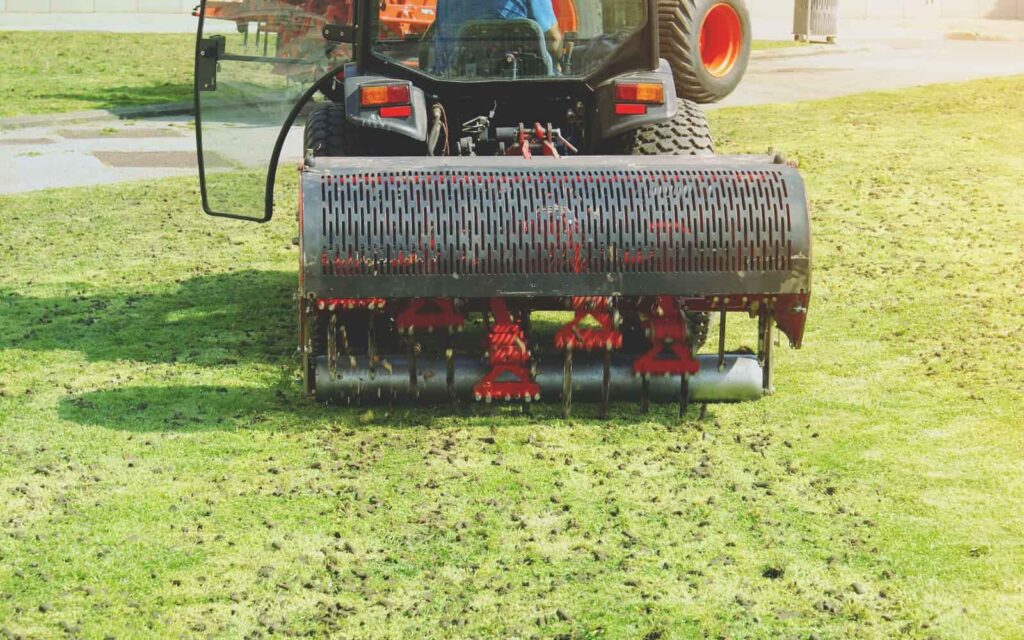
What are the things to know when buying aerators?
Consider these factors when you’re comparing or considering any aerator.
Soil types
Buying the right tool is vital to maintain your garden correctly. As there are four types of lawn aerators you can buy, you should choose one depending on your garden’s soil type.
You may not want to buy it for highly compacted dry soil as it won’t be enough to loosen the soil compaction.
Similarly, for a small, loosely compact soil, you don’t want to buy a commercial-grade tow-style aerator that will be overkill. It may even damage the delicate flower beds if you’re not careful.
Choose an aerator depending on the lawn size and type of soil you will be dealing with in your garden.
Indentions or remove soil plugs
When it comes to aeration, you can choose an aerator that can do indentations (make holes) or remove soil from the ground. There are pros and cons for each, and some people may find one preferred over the other.
Some people believe indentions aren’t very useful as they move the soil away, but the soil compactions remain. Removing soil plugs tends to be more effective as it removes the dirt from the ground, reducing the soil compaction.
Manual or Powered
This is an essential consideration to make whether you want the aerator to be manually powered or self-powered. If you choose manual aeration, it will be physically demanding work.
A manual aerator is a right choice for people in relatively good shape and small areas to cover. You can choose spike, plug forks, or even spike shoes to aerate the lawn manually.
The powered aerator will be a better choice for any medium to large-sized or highly compact soil.
What is the best time to aerate your lawn?
If your primary reason for aerating your lawn is to have a healthy-looking yard, then you should consider aerating it whenever you see gray grass patches or weak growing grass.
For proper yard maintenance, the best time to aerate the lawn is when the grass is in growth mode. It allows the grassroots to continue to grow and re-establish themselves in the ground.
If you want to know how often you should aerate a lawn, then aerating once a year should be sufficient in most cases. If you have troubled grass that won’t get thick and bushy, you can aerate it 4 or 5 times a year.
Also, be aware that you don’t want to aerate more than required as it also causes stress to the lawn. You can aerate in late spring for warm-season grasses or in early spring for cool-season grasses.
For example, if you’re aerating Bermuda grass, you can safely do the aeration anytime from May to August.
You should wait for a week or two before you consider mowing your lawn again. This gives the grass some time to recover from stress. If you plan to seed your grass, wait 4 or 5 days, so the ground becomes fertile to nurture grass seed.
Which is a better spike or plug aerator?
Spike and plug aerators function differently when it comes to aeration. Spikes are very simple in design as it just poke holes in the ground. You can use either a manual fork or machine-powered one.
Plug aerator (core) is also simple in design, but they remove soil from the ground wherever they poke. Usually, you can choose a spike for a smaller area. Still, the more efficient plug aerator is a better option.
You should choose a plug aerator that removes at least 3 inches of soil with a half-inch width. The space between each plug should be about 3 inches.
What is the right way to aerate your lawn?
You have the option to aerate the lawn manually or use a powered machine.
Manual aerator
- Before you start aeration, you need to prepare the yard by mowing grass as low as possible.
- Ensure that soil is moist. You can water it lightly a day before aerating. Don’t wet the ground too much; otherwise, it will be challenging to aerate.
- The manual aerator’s operation is straightforward. You place the spike at the desired spot and use your feet to press it deep in the ground.
- Give it some shake while it’s in the ground to loosen the soil around it.
- Follow a pattern, cover a single lawn direction, then go back and aerate it in perpendicular motion.
- Repeat as needed.
Powered aerator
- Prepare the ground surface by mowing grass and moisturizing the soil a little bit.
- Remove any obstruction such as a fence or rocks from the ground surface.
- Determine the area beforehand that you will be aerating. This helps you to direct the aerator without needing to stop.
- You can setup aerating height as needed.
- Turn on the aerator and follow a straight line back and forth during aeration.
- Keep the machine in control by having a firm grip on the handle. A lose control near the flower bed could easily damage the area.
- You can leave soil plugs in the ground that mix back into the soil after irrigation.
How can you cheaply aerate your lawn?
If you have a small garden area or don’t often aerate your lawn, then the cheapest way is to do manual aeration. The easiest and best way is to buy a spike shoe that you can wear over regular shoes and walk around areas you want to aerate.
But if you still have a large and highly compacted lawn area that needs aeration, the other option is to rent an aerator from a local store.
Home Depot and Lowes rent gardening tools that you can rent cheaply and use as needed. In this way, you don’t have to invest entirely in owning the tool when you don’t use it often.
Don’t use a tiller to aerate your lawn, as both serve a different purpose. Tiller moves the soil while the aerator punches a hole in the ground. If you use a tiller in your yard for aeration, it will ruin your whole yard, and you have to plant new grass.
Conclusion
The grass-root needs to have an adequate supply of water, air, and nutrients. Aerating your yard can help you achieve that without much effort.
We have reviewed several manuals and powered aerators that you can buy with confidence for lawn maintenance. While making any selection, ensure that you choose what fits your need and is suitable for your yard.
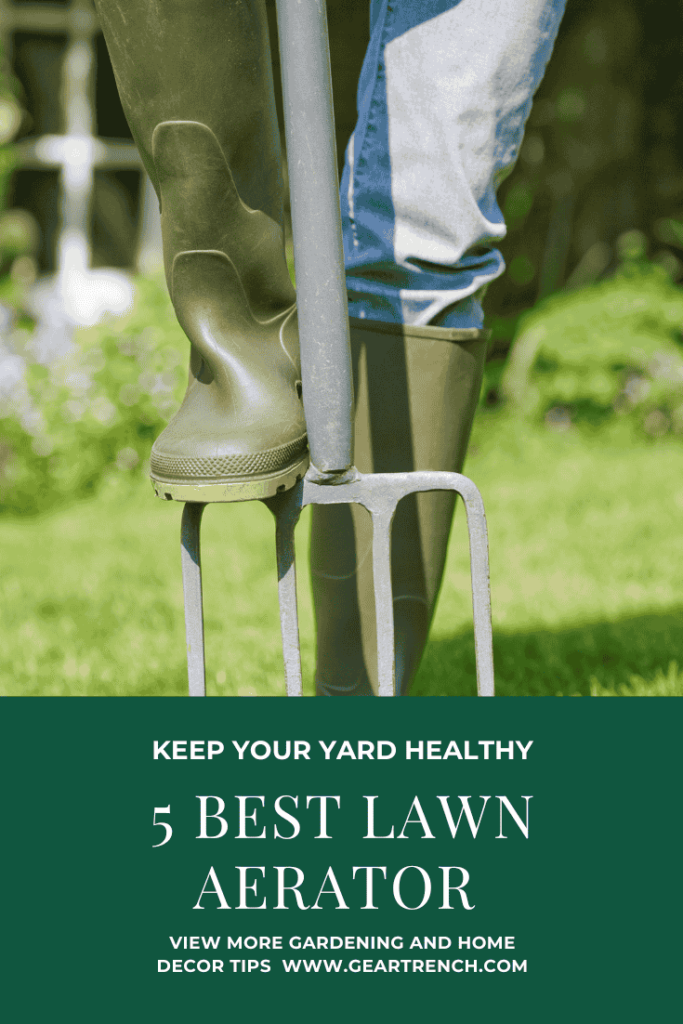
Don’t forget to share this post

